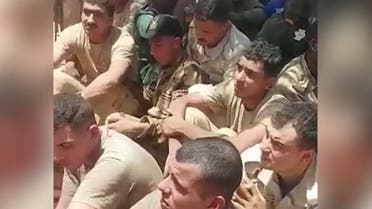Political Process to Form a Transitional Civilian Government and the Shift in Disorder Trends
Since the ouster of former President Omar al-Bashir in April 2019, Sudan has experienced a turbulent political transition. Following the
uprising that led to al-Bashir’s removal, the Sudanese military and a coalition of civic groups united under the Forces of Freedom and Change (FFC) established a transitional government to lead the country toward a democratic and civilian government. However, the transition has suffered multiple setbacks, including political unrest, rising economic instability, and a
military coup on 25 October 2021 that dismantled the civilian institutions and overturned parts of the previous power-sharing arrangement.
1 In December 2022, military and civilian political actors
signed a framework agreement to relaunch the political process for Sudan’s transition to a civilian government. This report analyzes the political developments of the transition process and the resulting shifts in patterns of disorder nationwide, with unrest declining in the capital Khartoum and surrounding areas, and new actors involved in violent activity.
Framework Agreement Signing and Decline in Unrest
Following the 2021 military coup and the resignation of former Prime Minister Abdalla Hamdok in January 2022,
2 the United Nations brokered a consultation process involving a wide range of Sudanese stakeholders to overcome the political crisis.
3
In December 2022, after mounting unrest and international pressure, 40 actors representing political and civil society actors as well as armed groups and the Sudanese military signed the framework agreement.
4 Many political actors, including foreign embassies, welcomed it as a step toward restoring civilian rule in Sudan.
5 The agreement calls for establishing a transitional civilian government, identifying five pillars: accountability and transitional justice; security and military reform; implementation of the Juba Peace Agreement (JPA) between the government and the armed groups signatory to the agreement in accordance with the political declaration signed with the non-signatories; dismantling the structures of the “30 June regime” under Omar al-Bashir based on the principles of rule of law and basic rights; and resolving the crisis in eastern Sudan.
6 However, some political groups – including most resistance committees, the National Congress Party, and the Democratic Bloc – opposed the agreement.
7 Differences emerged within the Transitional Military Council (TMC), with Commander of the Rapid Support Forces (RSF), Gen. Mohamed Hamdan Daglo (known as Hemeti), calling the 25 October military coup, which deposed Prime Minister Hamdok, a “political mistake,” while Abdel Fattah al-Burhan, the Sudanese army commander, saw it as necessary.
8 The leader of the Supreme Council of Beja Native Administrations also rejected the agreement and accused the RSF commander and the FFC of dividing the leaders of eastern Sudan.
9
Unrest has declined in the country overall since the signing of the framework agreement. Prior to that, ACLED records an increase in demonstration activity in Sudan after the 25 October 2021 military coup, which reached a peak in January 2022. From 25 October 2021 until 31 December 2022, resistance committees organized as informal neighborhood networks staged demonstrations against the coup demanding a civilian government in at least 90 locations across the country. Security forces intervened in nearly 30% of these demonstrations, resulting in at least 114 reported fatalities. Demonstration activity, however, has declined since January 2023 overall, particularly in Khartoum state. Notably, state intervention in demonstrations has also decreased since the end of 2022 (
see graph below). In particular, from 1 January to 7 April state intervention in demonstrations decreased by over 40% compared to the same time period prior. Moreover, ACLED records fewer reported fatalities associated with demonstration activity – at least five this year. Additionally, the issues driving demonstrations have become more varied and disconnected from national-level politics, and more about local and professional demands. Despite the declining trend since the end of 2022, there was an uptick in demonstration activity last week as resistance committees organized protests in at least 26 locations across Sudan – including nationwide demonstrations on 6 April coinciding with the anniversary of uprisings in 1985 and 2019.

